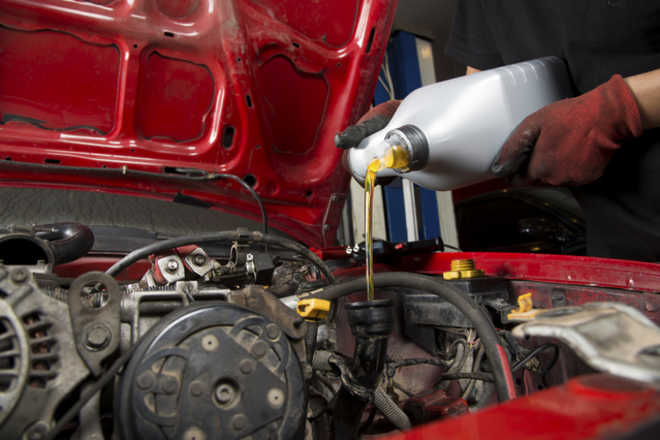Oiling the wheels
H. Kishie Singh
In earlier days when Ambassadors ruled the Indian roads the first engine oil change was carried out at 500 miles. The reason was that casting and cutting of the engine components was not an exact science, the metallurgy was not as developed and the quality of oils was quite poor, as was the fuel. During the run-in period, bits and pieces from the block, rings, pistons and connecting rods would ‘shed’. These would degrade the oil. The carburetted engine was a major culprit. The fuel in the combustion chamber did not burn completely. After combustion, some of the gases, full of carbon, degrade the engine oil.
After the running-in period the oil change was extended to 5,000 km. No more. The drain period has been extended to 10,000 km. The main reason for this is fuel injection. It is a great saving for the owner. An oil change can be an expensive affair. Here is the saving. In 1,00,000 km, at 5,000 km intervals you will have 20 oil changes and at 10,000 km drain period, only 10 oil changes. The cost of oil filters plus labour has been halved, not to mention the time saved.
The carburettor that did yeoman service for the automobile for more than 100 years was a most unfriendly invention to the owner and the environment, as was the internal combustion engine. Though the oil companies loved it.
Then came the fuel-injected engines. The quality of fuel improved. It was purer, it burnt cleaner and completely, something a carburettor could not do. Because no un-burnt fuel goes out the exhaust, you get more kilometres per litre. Most important, it is saving the environment from degradation. Fuel injection has another advantage. No carbon deposits in the engine. You may recall that in the older generation cars you had to ‘decarbonise’ the engine. No more, again money saved.
The availability of synthetic oils is another contributor for the long drain period. All manufacturers recommend an engine oil drain period of 10,000 km or one year. Even if your car has done 6,000 km in 12 months there has been a degradation in the viscosity of the oil. Please keep in mind the oils, especially brake fluid is hygroscopic. An annual change is necessary. To give you an example of the high quality of oils and additives, some manufacturers are offering coolant and gear box and transmission oils that are good for a life time. I am not sure whose? Cars or the owners — not specified!
All this means that you hardly have reason to open the bonnet. However, don’t be lulled into a false sense of security. Manufacturers recommend the following procedure: Once a month check engine oil, coolant, brake fluid, power steering fluid, windshield washer fluid, battery and bonnet latch operations. Look for leaks in hose pipes, gaskets, packings and fraying fan belts. Anyway, it’s good to give your engine a visual check.
Happy Motoring!










